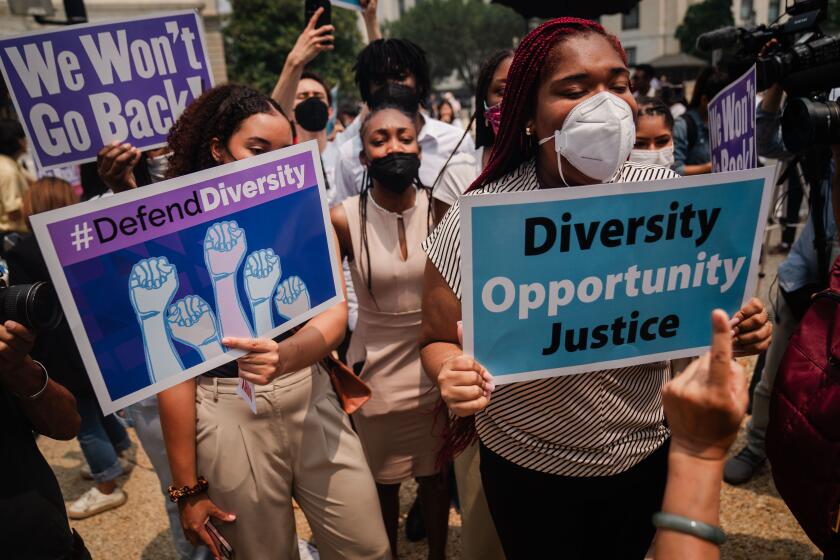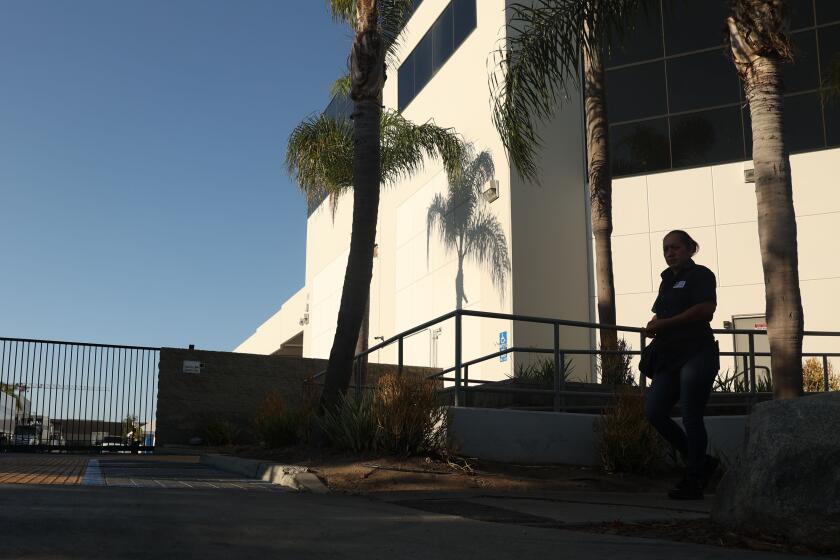Opinion: Attacks on diversity programs show the need to keep them going, and improve

As the U.S. becomes increasingly polarized, diversity, equity and inclusion — also known as DEI — efforts have been promoted as a way to bridge social divides and promote a sense of belonging for everyone, especially for those who have been traditionally excluded or marginalized.
But in recent years, a backlash has begun, with many institutions defunding their diversity and inclusion efforts in response to pressure from workers, lawsuits and even state governments. Among the companies recently curtailing DEI efforts are Ford, Lowe’s, Harley Davidson, Tractor Supply and John Deere. Relatedly, this year, Florida barred state funding from supporting DEI at its 28 state college campuses.
The PR fiascoes of the Dodgers, Target and Bud Light have all shown there’s no neutral position in today’s culture wars.
Ironically, critics of DEI efforts say the programs fail to include diverse perspectives. They contend the efforts emphasize certain backgrounds while neglecting others. Some argue that these programs actually worsen the problems they’re intended to solve.
While it’s easy to dismiss the backlash as purely a result of bigotry — as not all criticisms of DEI are made in good faith — it’s important to consider how DEI efforts themselves can be made to be more inclusive, in order to garner crucial support. True inclusion cannot occur when people continue to feel alienated. To be clear, my proposed answer is not for employers to ignore identity entirely or take a “color-blind” approach — not least because that’s not what employees want. Instead, a better approach is for employers to be intentionally inclusive of people of all backgrounds, to allow everyone to feel a sense of belonging.
At Harvard, on Wall Street and elsewhere, attacks on diversity, equity and inclusion ignore how race continues to shape opportunity in the U.S.
Unfortunately, many of the most popular DEI efforts — such as short, one-shot diversity training sessions — haven’t been found to be effective, at least not as they’re implemented. They haven’t been shown to improve workforce diversity, especially in leadership. In fact, they can sometimes even be counterproductive, reinforcing microaggression and bias instead of reducing them.
Research suggests these problems result from how programs are structured and implemented. They often prioritize achieving quick, symbolic victories — such as merely providing certain training, which might be required by law or corporate mandate. This short-term thinking comes at the expense of tackling long-term systemic issues, and biased daily practices could continue unabated.
The backlash began when antiracist education threatened the illusion of white innocence. It will continue to spread.
For example, it’s not uncommon for employers to set aside a few hours each year for workers to sit through a lecture-style diversity training. But this format often fails to change deeply rooted biases and behaviors.
Instead, research suggests that diversity training should be collaborative and sustained to allow for ongoing dialogue, so people can honestly confront issues that often go unspoken. This could mean creating a discussion group (composed of individuals with diverse perspectives) that meets regularly to collectively address workplace issues rather than requiring workers to attend a one-time lecture. This strategy makes some intuitive sense: Different biased behaviors have different root causes, and each requires a distinct response rather than a one-size-fits-all solution. It also keeps the focus on the work that must be done, and how the wisdom of the collective can design solutions to better accomplish the tasks at hand.
In contrast, mandatory training that takes place in an unsupportive environment can elicit resentment.
Despite tensions around DEI, most people would probably agree that workers should be treated fairly and given equal access to career opportunities — a foundational goal of DEI. But defining concepts like “fairness,” “inclusion” and “diversity” requires difficult conversations that are often not had.
The right framing can be a good place to start. Ideas such as “inclusion” can be framed in ways that speak to common root values, encouraging collaboration, or they can be framed politically, promoting division and feelings of threat and defensiveness.
One powerful way to build mutual understanding is to provide opportunities for people to share their own experiences. When those who feel they have been discriminated against share their perspectives, members of an organization can begin to better empathize and understand the perspectives of others. From there, it’s easier for them to reimagine policies and structures that might be more inclusive of people who have been traditionally neglected.
To be effective, diversity efforts should not focus just on individual employees, but also on structural practices at the organizational level. For example, when people of diverse backgrounds have more opportunities to collaborate in working teams, research shows that bias can be reduced.
Criticism may be growing, but it is a mistake for employers to pull back on their DEI efforts. Instead, they should focus on improving them. U.S. society is becoming increasingly diverse — and organizations must prepare and adapt.
Many workers value DEI. Meanwhile, research indicates that workplaces with poor inclusion climates have worse turnover rates, which in turn create high replacement and retraining costs for the employer. In the end, employers that fail to provide what workers want — inclusive work environments — are likely to be less competitive.
A diverse workforce is an asset to the organization that can be nurtured to produce positive outcomes for employers. The benefits have been empirically demonstrated across many fields, including healthcare, education and business. More diversity has been linked with improvements in innovation, communication, organizational performance and profit. A diverse workforce can provide better service to increasingly diverse customers.
Organizations shouldn’t back away from workplace DEI efforts just because of a cultural backlash. Rather, they should double down, using a more inclusive approach that emphasizes civility and dialogue — one aimed at finding common ground. Moving from an “us vs. them” mentality toward a focus on empathy, support and connection can change hearts and minds.
Henry Tran is an associate professor of education leadership at the University of South Carolina. This article was produced in partnership with the Conversation.
More to Read
A cure for the common opinion
Get thought-provoking perspectives with our weekly newsletter.
You may occasionally receive promotional content from the Los Angeles Times.









